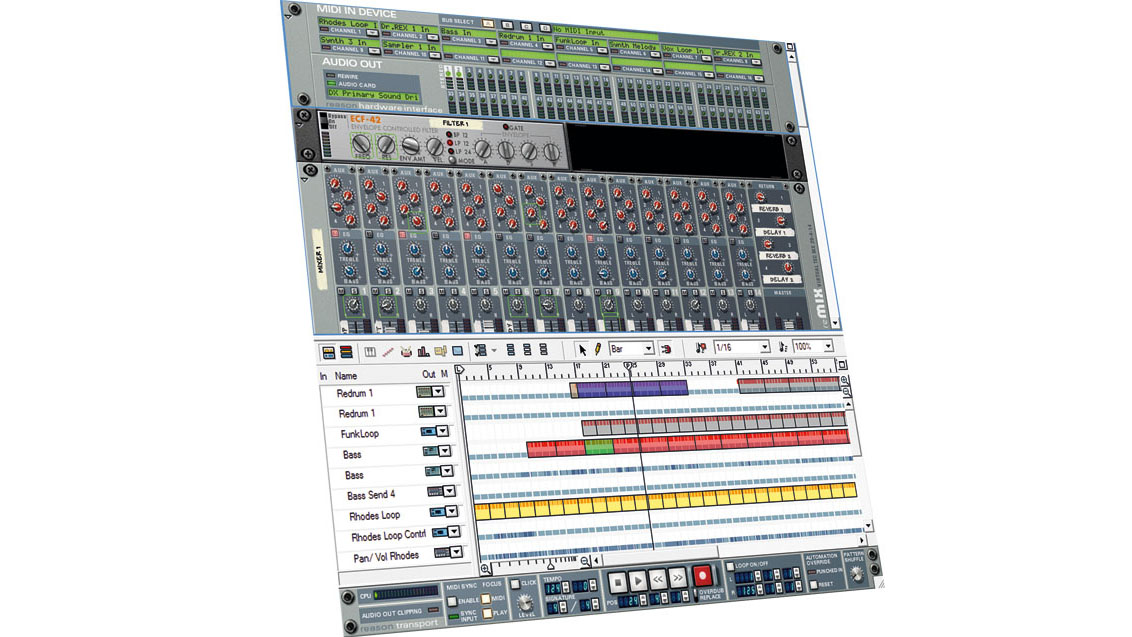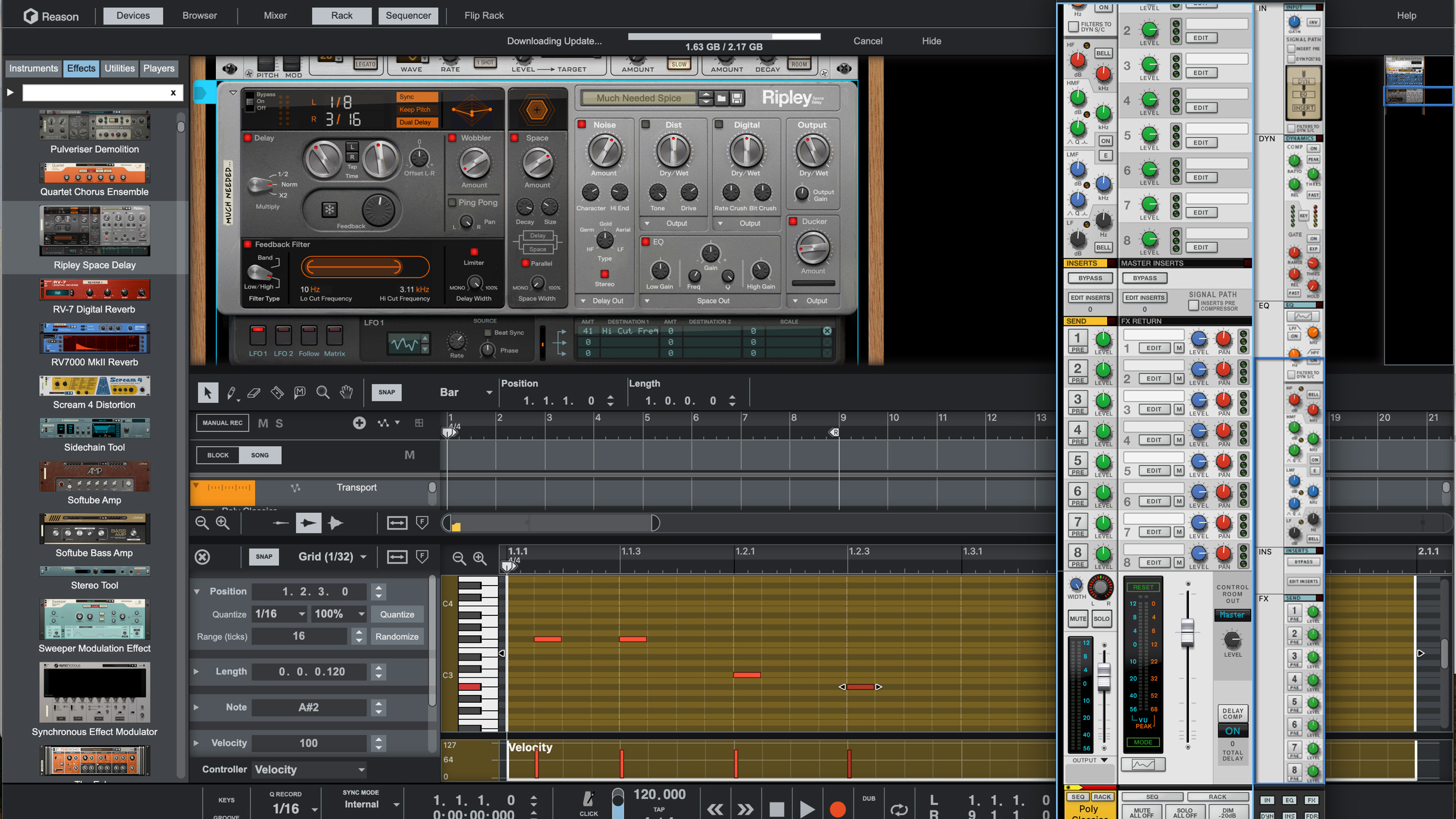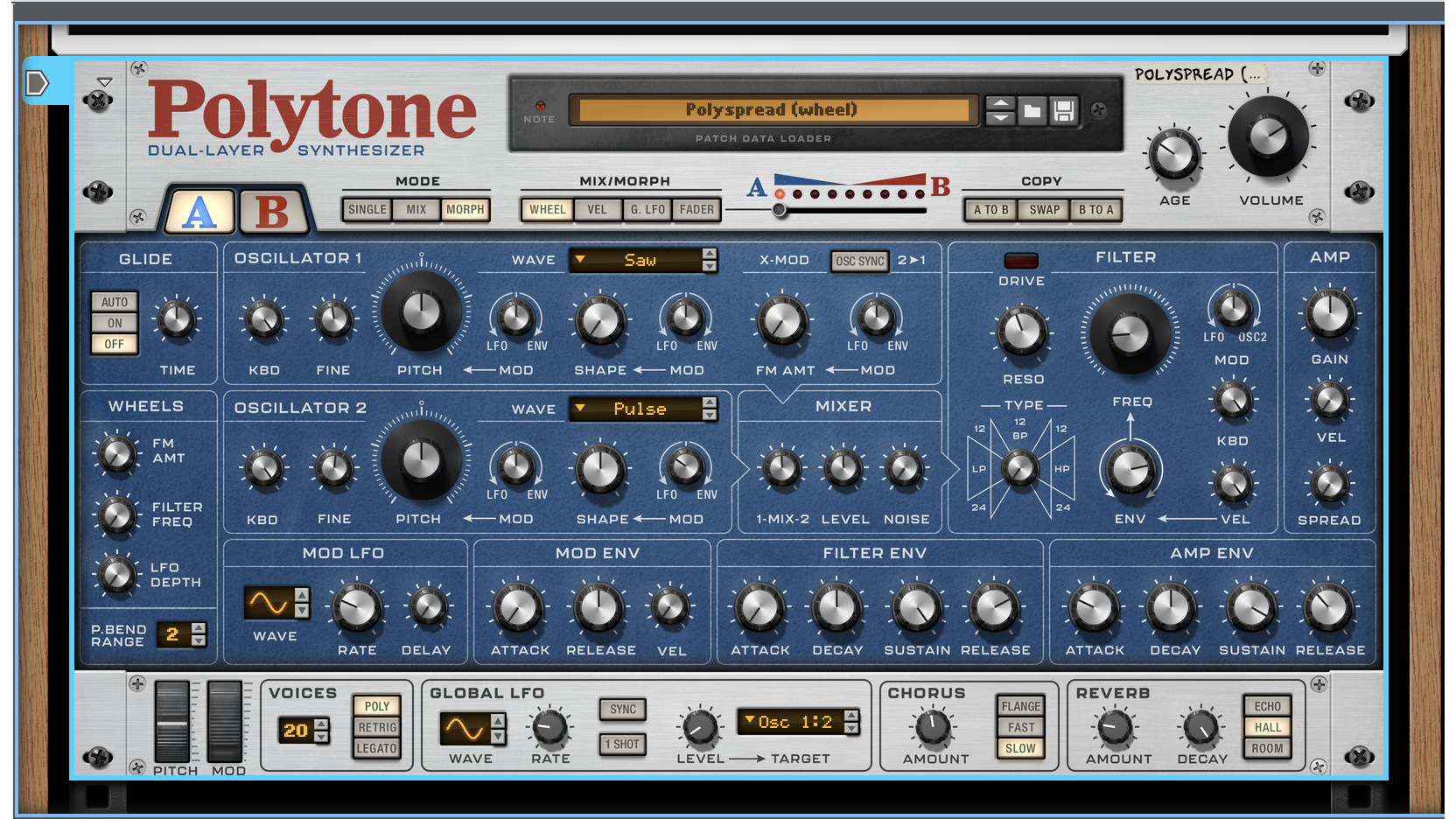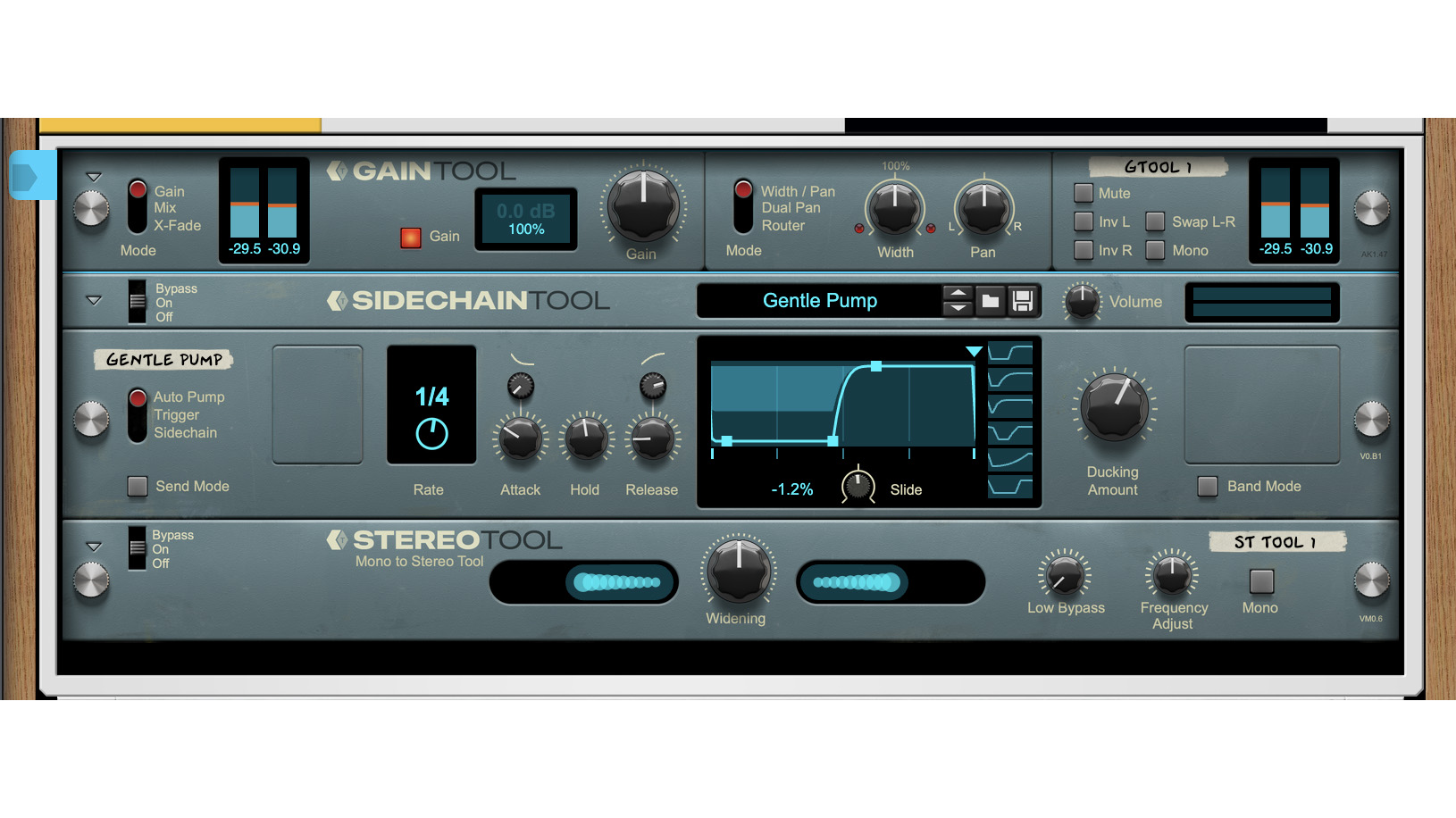MusicRadar Verdict
There’s a lot to love about Reason and revisiting it has been a joy, especially with its speed of composition. Whether it might make you reconsider your current DAW use is questionable as $499 is a big ask
Pros
- +
A very sizable update
- +
Polytone and Ripley are especially great
- +
The extra utilities have that ‘why didn’t they add that earlier’ appeal
- +
We loved revisiting all those classic Reason instruments
- +
And the slick workflow really is second to none in the DAW world
Cons
- -
Expensive
MusicRadar's got your back
Reason Studios Reason 13: What is it?
Wow. 24 years. To think that there was a significant part of the world’s population worried about the world ending via the Millennium Bug as the new century dawned in 2000 – not us, we were too busy playing Deus Ex and saying that Kid A wasn’t as influential as everyone thought it was. But then all those fears washed away, like tears in rain, because Reason v1 arrived!
To give you some idea of the impact of (then) Propellerhead Software’s first version of Reason, it pretty much invented the phrase ‘game changer’. At that point, software instruments were thin on the ground, and DAWs looked like spreadsheets or monochrome LEGO block builders. Reason changed all that, by mounting a stack of instruments – including the Subtractor synth, Redrum drum machine and Dr Rex and NN19 samplers – together in a virtual rack along with eight effects, allowing you to plug them into one another with virtual wires and, sequence them. More importantly than any of that, it made making music fun and colourful. And great sounding…
All within Reason
Reason won a lot of fans for its instant music making prowess, and later versions kept the momentum going, as we detail in our ‘A Brief History of Reason’ box (right). But really, Reason was kept as a fairly insular DAW for perhaps too long, one that didn’t really like to welcome other instruments and audio until much later versions, and getting you to use the (albeit pretty good at the time) ReWire feature for any inter app chat.
This perceived lack of progress in its lifetime has lost Reason some fans over the years. Or maybe it’s fairer to say that bigger developers like Ableton and Apple have moved their DAWs along faster. Either way, Reason has become more of an instrument ecosphere than DAW, especially with its transition to a VST plugin at v11, which effectively meant it could work within other DAW.
This was a smart decision at the time, as older users who had maybe moved to other DAWs could reconnect with their favourite instruments and workflows via a plugin within their current DAWs. However, it also possibly reduced Reason’s perceived value as a DAW in its own right – something that, after it had audio and VSTs added, it had certainly become. And far from being top of our yearly user polls, as the DAW was during the 2000s, it is largely now playing second fiddle to others – and at $499, it is an expensive second option. So will the latest version 13 change that?

A (very brief) history of Reason
Throughout Reason’s 24-year history, there have been major asks from users, with developers Propellerhead and later Reason Studios delivering… eventually. V2 (2002) added REX support (so samples could match bpm) and the NN-XT sampler. V3 (2005) intro’d the Combinator so groups of devices could be saved as a patch. V4 added the Thor synth – one of Reason’s big draws – and v5 the Kong drum designer and Dr Octo Rex looper. V6 intro’d the much-asked for audio capability via Reason Record (until then, a separate app), and 6.5 (2012)had Rack Extensions so third-party devs could add plugins. V7 and 8 added MIDI out and a new browser, but v9 (2016) was better, with Player devices to control other instruments with arpeggiators and chords. V9.5 added the long-asked for VST compatibility – hurrah! That only took 17 years. 2018’s Reason 10 highlights were the Europa and Grain instruments, while v11 was the most dramatic, with Reason Rack meaning you could run the now Reason Studios Reason in other DAWs. v12 added Mimic and an overall refresh, and that brings us nicely up-to-date.

Reason Studios Reason 13: Performance and verdict
After that long, but certainly necessary intro – Reason has had such an eventful history that any new version requires that context – we can tell you that v13 is a very full update. There’s a brand-new browser, a completely upgraded sequencer, five new devices, some UI refreshes, and loads more sounds.
Want all the hottest music and gear news, reviews, deals, features and more, direct to your inbox? Sign up here.
The new browser is now separate from the Device Palette which shows loaded instruments and VSTs (they were together in previous versions). In the browser you can type anything by genre or sound and home in on patches (instrument, Player and effect), REX loops, samples and MIDI files. All 30,000 sounds in the Reason library have been tagged so this is up to speed with Live 12’s big browser upgrade, with a very usable filtering system and ultimately a speedy way to get to the sounds you want. The ability to add favourites and shortcuts to your content folders is great and anything to aid workflow like this has to be applauded.

Polytone is the name of the highlight new Reason device, a dual-layer polysynth of a VA variety. Initially, the synth seems just like yet another virtual analogue, but as the manual says, “it wouldn’t be Reason Studios if we didn’t tweak the formula a little”. So you get oscillators with extra waveshaping and noise, but Polytone’s most unique part is the ability to mix and morph its two layers.
Put simply you set a sound on Layer A and Layer B and either play them separately, mix them together, or morph from one to another with a fader. You can also control this using the modulation wheel, note velocity or an LFO. So as well as very decent analogue style sounds, you also get bigger (up to 20-note polyphonic), dynamic sounds – and a useful spread control makes sure they can be separated far and wide, while an Age control adds some vintage flavour. This all gives the synth a lot more of an interesting character compared to your average VA – it’s a very neat v13 addition.

Our other favourite newcomer to Reason 13 is the Ripley (great name) Space Delay. This is at heart a delay and reverb, but it does also feature noise, distortion, bitcrusher, and EQ sections. Add in a ducker and a full and easy-to-use modulation section and this is really a very flexible multi-effect. Ripley’s UI is very easy to get to grips with, the main Delay (with Delay Time, Feedback Tempo sync, Freeze, Wobbler and Stereo controls), Reverb (with Decay, Size and Amount dials), and Filter Feedback sections being on the left, with the rest of the effects divided up on the right. A modulation matrix runs along the bottom. Everything is laid out well with obvious and easy-to-understand controls, and more importantly, it can sound absolutely gorgeous. There’s enough to heap on to give you those lovely out-of-control feedback delays but also some subtly brilliant presets, covering everything from chorus to lush atmosphere and chasmic spaces. We particularly liked cranking up the Feedback dial and hitting Freeze and you can lose a lot of time with just this one R13 addition.

Other new additions
Other devices include a Gain utility tool which not only gives you some boost but stereo width; a Stereo Tool which can turn mono sources into stereo, or just making sources wider; and a Sidechain tool. This can work with an Auto Pump option, which just adds that 4/4 pumping effect you pretty much want every time, but without any connecting and routing. Or you can do it via a Trigger Mode (which triggers a rhythmic pump via MIDI), or Sidechain mode for the original compression option. The Reason UI has been updated with a new look for various controls and a new top bar for navigation added. There are 1,000 new sounds, but the final big addition is a new, separate Edit window and inspector for the sequencer, so you can get in and change notes via a Key, Beat or REX Edit pane, but keep the arrangement in view in a second window – in previous versions, the Edit window would replace the Arrangement one.

Reasons to be cheerful?
Some R13 extras might have you wondering why they weren’t there before, but they are all welcome, and there’s no denying that this is a fine update. It looks good, sounds better, and you can make music faster Could you really ask for any more? A possible problem could be how many of its improvements will be relevant for people using Reason as a plugin. The extra sequencing power will perhaps be ignored in favour of their main DAW’s sequencing. Sure, the additional devices will be used but are they enough of a pull? At $499 it’s hard to see, especially if you are just buying Reason for its instruments, as similar money could get you something as big as Arturia’s V-Collection.
Which leaves the question of whether Reason 13 should be returned to and used as your main DAW in its own right. We can’t deny that going back to it after a few years away has been a joyful experience, especially loading Thor up and revisiting some mighty sounds. But we wonder how much of this is mere nostalgia. That said, we have been creating music much faster and getting ideas down with a slicker workflow in the time we’ve been testing Reason 13, which says a lot over how it compares to our main DAWs.
But getting people to change DAW from the one they have a long-term relationship with is a hard job, just ask the likes of Bitwig, Tracktion and a slew of other fine developers. And going back out with that person you had an affair with 20 years ago might not be the best idea (at least that’s what our mum told us) so Reason Studios is in a tough position, with an even tougher crowd to impress. However, for existing Reason users, 13 is a must, albeit a pricey $199 upgrade, and if you are, like us, an early C21 enthusiast, it might just tempt you back into its welcoming and familiar workflow.
MusicRadar verdict: There’s a lot to love about Reason and revisiting it has been a joy, especially with its speed of composition. Whether it might make you reconsider your current DAW use is questionable as $499 is a big ask.
Reason Studios Reason 13: The web says
"With a nested and modular approach somewhere between FL Studio and Bitwig, the DAW’s user interface and workflow are too indirect for me. Moreover, Reason still supports neither MPE nor ARA, and – most irritatingly – it still cannot import video files. In 2024, this seems a bit outdated at best."
Gearnews
Reason Studios Reason 13: Hands-on demos
Reason Studios
Chris Reed Beats
Chimp Spanner
Reason Studios Reason 13: Specifications
- 64-bit Windows and MacOS
- 4 GB RAM (8 GB or more recommended for large ReFills or Rack Extensions)
- 6.5 GB free system disk space required, plus 20 GB for optional content
- VST3 and VST2 plugin support
- Expandable with Rack Extensions
- Support for Ableton Link
- Delay compensation makes all signal paths play in perfect, phase-locked sync
- Unlimited audio recording and instrument channels
- MIDI instrument output
- MIDI clock output over multiple ports
- Live sampling on all Sampler devices
- Remote mapping to control Reason with external MIDI controllers and hardware control surfaces
- Supports all major file formats—from .wav and .aif to .mp3 and more
- Real-time sample rate and bit depth conversion
- Self-contained song files
- Advanced modelled mixing console with complete channel strip for every instrument and audio channel
- Contact: Reason Studios
Andy has been writing about music production and technology for 30 years having started out on Music Technology magazine back in 1992. He has edited the magazines Future Music, Keyboard Review, MusicTech and Computer Music, which he helped launch back in 1998. He owns way too many synthesizers.




